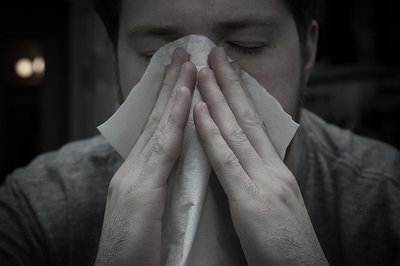Why is pollen a problem?
Although benign, pollen from certain plants can trigger allergic diseases in sensitive individuals.
Whole pollen grains landing in the eyes or nasal passages can trigger seasonal allergic rhinitis (hay fever), characterised by a blocked or runny nose, sneezing and itchy eyes. Allergic rhinitis affects around 18% (nearly 1 in 5) of people in Australia and New Zealand (see https://www.allergy.org.au/patients/allergic-rhinitis-hay-fever-and-sinusitis/pollen-allergy).
It is important to recognize that pollen can trigger asthma as well as hay fever symptoms; around 1 in 4 people with hay fever also have asthma (see https://www.allergy.org.au/patients/asthma-and-allergy/thunderstorm-asthma). Many people with hay fever due to grass pollen allergy can get wheeze or chest tightness in the spring and summer season when they also have hay fever. This is likely to be asthma triggered by grass pollen allergy.
Counting the levels of pollen in the air means that people who have asthma (triggered by pollen) and hay fever, can be informed of days that are forecast to have high pollen levels. This information allows them to take preventative measures such as staying indoors or having their medication close at hand. Because rye grass pollen is the major allergic pollen type in Victoria, the Victorian Thunderstorm Asthma Pollen Surveillance (VicTAPS) network counts and forecasts are for grass pollen.
During grass pollen season people may notice an increase in asthma and hay fever symptoms. Grass pollen season (October through December) also brings the chance of thunderstorm asthma.



